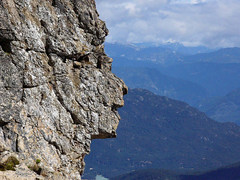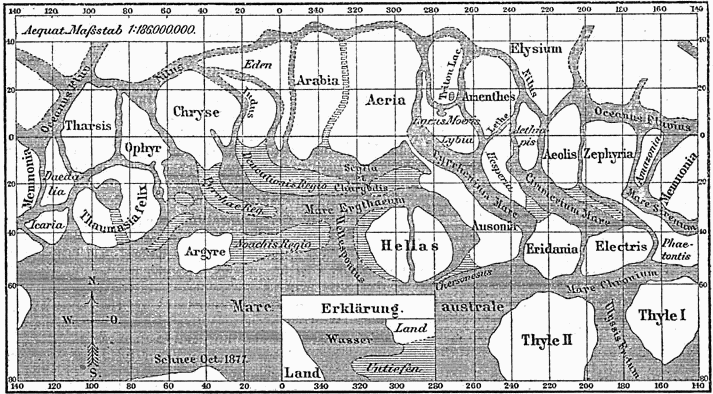And Then I Saw Your Face
Pareidolia 1994 CE
Modern Relativism
 Greek para- amiss, faulty, wrong, almost + eidolon, diminutive of eidos appearance, form, image, sacred image, idol
Greek para- amiss, faulty, wrong, almost + eidolon, diminutive of eidos appearance, form, image, sacred image, idolNeuropsychological phenomenon of erroneous/ illusive/ fanciful/ mis-/perception/ interpretation of a vague/ ambiguous/ random stimulus (usually an image) as a recognizable/ clear/ distinct/ specific pattern .
Human vision is especially sensitive to such overinterpretation, the human brain is “wired” to see patterns, especially those of faces, as creating and perceiving patterns is what allows all animals to operate more efficiently in their environments. It's all in our mind or brain--we have a penchant for recognizing, with the faintest of stimulus from the environment, the likeness of our fellow humans.
The question is the ability, at some point, to distinguish the good grain from the shaff; this is why science has double-blind studies, so that the people who are collecting the data don’t unconsciously assign results to the treatment.
That the term pareidolia was coined in 1994, and 'apopheny' (see below) in 1958, probably illustrates how religion was prevalent before WW2, and how only the traumatism of world wars and the education of historically unprecedented wealth and pervasive visual media, gives enough critical distance to theoretize it.
But a problem remains, that many domains of knowledge, are not accessible to scientific reasoning, let alone because data are insufficient. It is e.g. the case in historical situations with insufficient data, orphan theories, e.g. in prehistory which by definition has no written record, but has to rely on reasonable analysis of objects, myths, and human intuitions.
In studying human history and prehistory, one has to acknowledge the role of pareidolia in shaping beliefs, behaviours, civilizations. The way people think, be it irrational (Extraordinary Popular Delusions & the Madness of Crowds, by Charles Mackay), is a rational fact.
Lévy-Bruhl, in "Primitive mythology, Surnatural and nature in the primitive mentality" (La mythologie primitive, Le surnaturel et la nature dans la mentalité primitive, Paris, Alcan, 1935), quotes a shaman's wife: "You always wish that supernatural things should be intelligible. But we are little concerned with this matter. We do not understand, and we are no less satisfied."
And, commenting on Australian and Papou mythology: "Almost every remarquable rock ... has a legend ...."
The reality studied is of a greater degree and interest; in the further down selected cases, the elements of cultural wealth and of innovative syncretism, of borderline trans-specialty big history, usually rejected as uninteresting or insufficiently documented.
Moreover, there is synthetic knowledge value in mystical intuition, as existed from the earliest human prehistory, and often with the help of naturally-occuring entheogens, shaping many classical world views. Pareidolia then is an acceptable way to epiphany and protoscientific intuition, beyond a simplistic/dualistic contest.
And, even if it has limited scientic value, paraeidolia keeps a general esthetic philosophical quality; in more mystical and monistic cultures, pareidolia are collectibles (e.g. gongshi scholars' rocks in ancient China, and Japanese karesansui zen rock gardens).
Apophenia, or apophany, term coined in 1958, is very close, almost synonymous with pareidolia: a spontaneous perception of connections and meaningfulness of unrelated phenomena, a "type 1" error, by excess of sensitivity.
Pareidolia would be the apophenia of an external stimulus; an obscure stimulus is viewed as something clear and distinct.
Simulacrum, plural simulacra, from the Latin simulare: to make like, to put on an appearance of, is a religious (roman catholic, hence the church latin) term, a likeness or semblance. Pareidolia is the human tendency/ability/capacity to perceive simulacra.
Most reported simulacra are religious, pious imagination, of Catholic or Orthodox tradition, wherein there is a special emphasis on icons and other holy images.
Hierophany, from the Greek, hieros: sacred, and phainein: to show, is the physical manifestation of the holy or sacred. Many believers will think that such an apparition is a sacred message sent by God, and will worship it as a sacred item or a holy item.
Between complete rejection as pareidolia, and complete litteral acceptation as hierophany, human cultures consecrated long ago the use of the image, of the imagination, as a code susceptible of both interpretations, synthetic, and allowing memorisation and memory transmission even through troubled times.
Doublethink is the dysfunctional, totalitarian capacity, to hold, or at least profess, simultaneously two logically contradictory views, as does the hero of Orwell’s 1984, who hates and loves Big Brother. This mode of thought is not limited to outdated or faraway totalitarianisms. We all face it in apparently intractable situations. E.g. we want to live, comfortably, yet we know that death exists, and that the world is not inexhaustible, so that a Malthusian reckoning looms.
Analogy, from the Greek, ana: upside-down, and logos: reasoning, is an argument from a particular to another particular, by comparison, instead of going to a general principle. It's like comparing apples and oranges, it often gives absurd or false conclusions. But it can be useful, to try to understand or describe something unknown by reference to something known. As both are tasty round fruits, oranges were sometimes called Chinese apples, as in "sinaasappel" or "appelsin" in Dutch. And in Italian, tomato(e)s are named as golden apples, "pomodoro".
Symbol, from the Greek sym: together, and bolein: throwing, is a conventional representation, of something by something simpler,
 a mark, a sign. Our signature symbolizes us, legally stands for us when we are absent. An idea, a scientific concept, a philosophy or religion, a country or company, can be represented by a symbol. A symbol is just a tool, that can be used to unit or to divide, as Aesop's tongue. The devil or diable is dia-bolical, as in throwing apart, separating, making things unduly complicated.
a mark, a sign. Our signature symbolizes us, legally stands for us when we are absent. An idea, a scientific concept, a philosophy or religion, a country or company, can be represented by a symbol. A symbol is just a tool, that can be used to unit or to divide, as Aesop's tongue. The devil or diable is dia-bolical, as in throwing apart, separating, making things unduly complicated.Parable, from the Greek para: besides, and bolein: throwing, is a fictional brief narrative, intentionally designed to illustrate an idea, a principle. It goes skillfully around its subject like a geometrical parabola.
Allegory, from the Greek, allos: other, and agoreuein: to speak in public/in the agora, is a figurative mode of representation conveying a meaning other than (and in addition to) the litteral. An image, a statue, can represent a hidden meaning, as in esoteric teachings, the heretical alchemy or astrology of the middle ages. Ancient gods represented their functions.
Metaphor, from the Greek, meta: greater, and phorein: to transport, is a representation of one signified thing, by an apparently unrelated other sign, as if they were in some way similar or comparable; often a little thing can stand for a bigger thing, the microcosm for the macrocosm, the representation for the thing represented. Magritte's painting "This is not a pipe, The Treachery Of Images" illustrates the falsity of the metaphor: the image or depiction, is not the thing itself.
Signature or sympathy, from the Latin sym: together, and pathy: to suffer, to feel, is a metaphor taken literally for true, where the small thing is taken as really the same as, or verysimilar and intimately related to, the big thing, as an handwritten signature to the person, so that an action on the microcosm can sympathetically directly affect the macrocosm, "as above, so below", as with a voodoo doll supposedly influencing a corresponding person's health. As the willow tree (Latin, salix) thrives in humid marshes, therefore, its bark must reduce sweating fever: and indeed, the willow's bark extract, acetylsalicylic acid, Aspirin, does cure fever.
Sympathetic magic is the magic based on metaphorical correspondance, on signature, on sympathy, the metaphysical belief that, given that like affects like, something can be influenced sympathetically through its relationship to another thing. By painting life-like animals in a cave, the shaman provokes them to appear for the hunt.
Logo, from the Greek logos: speech, reasoning, universal order, is an image, an iconic symbol, designed to represent and advertise something. A logo is still used nowadays for symbolic and sympathetic magic, as when a national flag is burned to mean disrespect to, and subjectively hurt, the corresponding nationals.
Icon, from the Greek eikon: image, is an image or representation, designed to represent something by likeness or analogy, especially in religion for divine images. Some religions or philosophies were initially abstract and aniconic, forbidding icons, like buddhism, to pass to symbolic then to realist human representation. Some religions were or evoluted into iconoclasm, the destructuion of icons, like islam or christian byzantine or reformation revolts, in a representation of theological purification.
Idol, from the Greek eidolon: image, is an object venerated in some way, often designed as an icon, a cult image. Idolatry is the veneration of idol(s), often regarded as philosophically inferior by abstract religions.
Animism, from the Latin anima: personality, mind, or soul, is the belief of the presence of an individual personality in many significant things, as stones or rivers, each like a little god, usually in a polytheism. The bigger entities with their bigger god, survived the historical mergers, up to monotheism's winner-takes-all only god. The annual cycle of the sky was due to a god winding the sky around, the precession cycle to a senior god.
Nominalism, from the Latin nomen, name, is the doctrine holding that, in contradiction to platonist idealist theory, general abstractions or universals don't exist but in name, and that every object and notion is unique and different. This almost suppresses the possibility of scientific generalisations and theories (prudently low sensitivity with false negativity), but avoids false conclusions (high specificity).
Gnosticism, from the Greek gnosis: knowledge, encourages to see both sides, the litteral and the mystical, the exoteric and the esoteric, the apophenia and the epiphany, or was it vice-versa …
References:
Explore Dictionary of Psychology
Skeptic's Dictionary
The Folklorist and his pareidolia collection
http://www.google.be/search?hl=fr&q=pareidolia&meta=
http://www.flickr.com/groups/pareidolia
http://web.tri-isys.com/egtan/hokum/pareidolia.html
http://hokum-balderdash.blogspirit.com/simulacra-pareidolia
http://web.tri-isys.com/egtan/hokum/pareidolia.html
http://qw88nb88.wordpress.com/tag/pareidolia
http://rupestreweb2.tripod.com/hierofania.html
http://www.mnmuseumofthems.org/Faces/intro.html
http://www.mnmuseumofthems.org/Faces/index.html
http://www.mnmuseumofthems.org/Faces/FacesGiant.html
http://www.forteantimes.com/gallery/simulacra.shtml
Infamous Rohrschach blot test of paraeidolic psychoanalysis
Buddha of Bamiyan (Central Asia) 400-1600-2001 CE
Encounter of Civilizations
.jpeg)
 Location: Central Asia, Afghanistan, old Ghandara, Bamiyan
Location: Central Asia, Afghanistan, old Ghandara, BamiyanStory: built on the silk road crossing Eurasia, , destroyed by intolerant Muslims in 1600's CE (the face) and 2001 CE (the body)
- BCE encounter of Mediterranean Hellenism and Asian Bouddhism & Hinduism in Central Asia BCE, from Alexanders's conquest to Greco- Buddhism (in Ghandara, present-day Afghanistan and Pakistan) to Indo-Greeks (Yona-Ionians in Northern India) to Greek Buddhist monks spreading buddhism to Sri Lanka. Philosophy, rationalism, monism, mysticism, appear transculturally linked.
Buddhism (in Ghandara, present-day Afghanistan and Pakistan) to Indo-Greeks (Yona-Ionians in Northern India) to Greek Buddhist monks spreading buddhism to Sri Lanka. Philosophy, rationalism, monism, mysticism, appear transculturally linked.
 Greco-Buddhist syncretism of Mediterranean Hellenism and Asian Buddhism, versus CE violence from monotheistic Islam towards monistic buddhism: what changed was the invention of totalitarian religions
Greco-Buddhist syncretism of Mediterranean Hellenism and Asian Buddhism, versus CE violence from monotheistic Islam towards monistic buddhism: what changed was the invention of totalitarian religions- CE confrontation of mystical
 syncretism versus literalist intolerance; the "idolatry" of buddhism versus the "iconoclasm" of islam; paradoxically islamist vandalism brings buddhist
syncretism versus literalist intolerance; the "idolatry" of buddhism versus the "iconoclasm" of islam; paradoxically islamist vandalism brings buddhist  art back to its aniconic beginnings, as before the BCE (Central Asian) synthesis; buddhism is less literal and learned to rebuild, as "nothing is permanent".
art back to its aniconic beginnings, as before the BCE (Central Asian) synthesis; buddhism is less literal and learned to rebuild, as "nothing is permanent".Wiraqocha of Ollaytantambo (Inca) 1200 CE
Global Diffusion

Location: Peru, Inca Cuzco valley, OllantayTambo
Size: 45 metre (159 feet)
Story: in the sacred valley of origin of the dominant Inca tribe and dynasty, among other giant sculptures of sky deities, overlooking the sacred city of Ollantaytambo, a bearded face wearing the cap of a priest-astronomer
References: Incas' Ancient History Books
The civilisation of the inca Empire, by Rafael Karsten
The Secret of the Incas: Myth, Astronomy, and the War Against Time, by William Sullivan
http://realmagick.com/articles/54/2154.html
http://www.channel4.com/history/microsites/E/ends/inca1.html
Hamlet's Mill: An Essay Investigating the Origins of Human Knowledge And Its Transmission Through Myth, by Giorgio De Santillana & Hertha Von Dechend
The House Of The Sky, by Bruce Rimel
Unexpected Faces in Ancient America: The Historical Testimony of Pre-Columbian Artists (1500 B.C.-a.D. 1500), by Alexander Von Wuthenau
American Discovery: Our Multicultural Heritage: by Gunnar Thompson
http://www.gunnarthompson.com
Kon-Tiki Museum, Oslo, Norway
Discovery of the Americas, German links website
The Shape of Ancient Thought: Comparative Studies in Greek and Indian Philosophies, by Thomas McEvilley
Pale ink: Two ancient records of Chinese exploration in America, by Henriette Mertz
The Asiatic Fathers of America, by Hendon Harris
Dragon Treasures, Treasure Maps of Fu Sang, by Donald Cyr, Hendon Harris
The Diffusion Issue, Chinese Ancient World Mapping, by Gunnar Thompson, James Brett, Donald Cyr
Nu Sun: Asian-American Voyages, by Gunnar Thompson
Origin of the Olmec civilization, by Mike Xu
In Plain Sight, Old World Records in Ancient America, by Gloria Farley
The socialist phenomenon, by Igor Chafarevich
Movie (torrent download), constellations, American Discovery, map
Interpretations:
- the Incas united, after centuries of disintegration, a centralized empire, despite the absence of writing, of wheel or horse transportations, and organised a totalitarian theocratic system,  capable of great works like sophisticated terracing and irrigation, and gigantic enscening of their astrological mythology; yet they reached ecological limits and most lived poorly
capable of great works like sophisticated terracing and irrigation, and gigantic enscening of their astrological mythology; yet they reached ecological limits and most lived poorly
- the Andeans venerated the sky as correlated with earth, the stars as heavenly correspondents of earthly tribes; the inca overlords adopted the sun as their superior symbol, and as a solar theocracy, were most concerned by the apparent movements of the sun and sky, with their daily, yearly, and secret precessional cycles.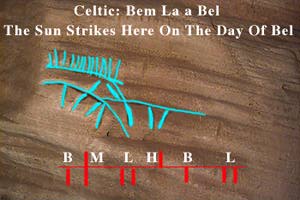
- the bearded figure is not Andean, as Andeans have no facial hair,  strongly suggesting some intercontinental diffusion, amongst many other elements.
strongly suggesting some intercontinental diffusion, amongst many other elements.
Occidental world map and Ogham, Oriental Ring Continent Harris map
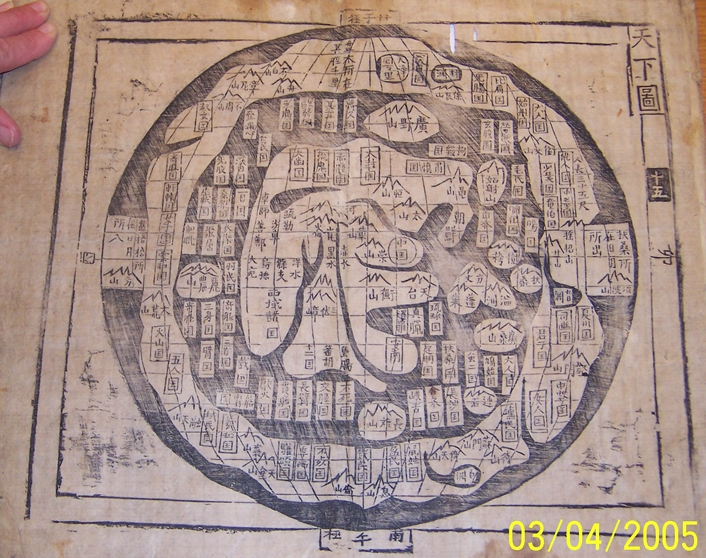

- The bearded figure has another giant South American representation, on the other side of the continent, in southern Rio de Janeiro, the rock of Gávea, a bearded sphinx with a possible old world inscription, showing an old world source (Mesopotamian-Phoenician, with possible Hebrew characters), a transatlantic diffusion, and a possible transamerican cultural connection along the Amazon, possibly to reach up to Tin, Gold and Silver mines in the Andes, and to luxuries as Cocaine and Tobacco. Along this commercial route could have come the old world spherical astrotheology and old-timer pre-hipparchian precession knowledge.
- He is the creator/architect, old Father sky/universe god, in charge of the precessional big Time, the very long, esoteric, precession eon, wielder of the Kon Tiki ('primeval spherical grindstone') Heavenly Mill (Wiraqocha  reportedly means 'tilted plane of the celestial sphere', a reference to the 23° obliqueness of the solar system plane (the ecliptic) to the earth celestial equatorial plane), and often identified with Saturn, the planet with the slowest (oldest) orbit. He is superior even to the sun god of the inca tribe, in charge only of the smaller cycles of heavens, the exoteric solar year. The Inca, officially at the top of the theocratic society, secretly feared and lobbied him.
reportedly means 'tilted plane of the celestial sphere', a reference to the 23° obliqueness of the solar system plane (the ecliptic) to the earth celestial equatorial plane), and often identified with Saturn, the planet with the slowest (oldest) orbit. He is superior even to the sun god of the inca tribe, in charge only of the smaller cycles of heavens, the exoteric solar year. The Inca, officially at the top of the theocratic society, secretly feared and lobbied him.
- the Inca encountered a major problem, stemming directly from their astrological belief of sympathy between macrocosm and earthly microcosm, and their political dependance on acting all the ramifications of their claim to solar ancestry. Much as, before them, the Egyptian Old Kingdom pharaohs, and the Chinese Xia emperors, lost their throne when they proved powerless over Nature's catastrophies. They thought within a geocentric flat earth concept, with as main nightly feature, the bright galactic arc  crossing the sky at an angle. There are thus several significant planes, the galactic with the constellations of stars, the ecliptic with the sun and planets, the local flat earth horizon plane, and the theoretical earth celestial equator (almost perpendicular to the flat earth, near the equator).
crossing the sky at an angle. There are thus several significant planes, the galactic with the constellations of stars, the ecliptic with the sun and planets, the local flat earth horizon plane, and the theoretical earth celestial equator (almost perpendicular to the flat earth, near the equator).
The two opposite intersections of galactic and ecliptic planes are nearly constant (in recent millenia, in the direction of the galactic center, near the constellations of Sagittarius and Scorpio, near the corresponding Andean black galactic zones of Llama and Coyote (near the tail of the Coyote)). Sunrise is by definition at the intersection of the horizon and the ecliptic. Every year at the same point of the cycle, the sun rises on the same galactical and ecliptical background.  What changes, is the very slow precessional rotation of the earth axis to the galactic plane (seen from Earth as a very slow rotation of the galactic plane), interpreted as a "drowning" below the horizon of the constellations (with corresponding myths of Coyote getting his tail wet, then of Llama almost drowning).
What changes, is the very slow precessional rotation of the earth axis to the galactic plane (seen from Earth as a very slow rotation of the galactic plane), interpreted as a "drowning" below the horizon of the constellations (with corresponding myths of Coyote getting his tail wet, then of Llama almost drowning). Every morning of the year, the sunrise point on the horizon changes (apparently moves), and oscillates within the year between two extremes of longest and shortest day. Every year at winter solstice, the longest day, the sunrise point on the horizon apparenty ceases to move for a few days, before reversing direction (symbolically, a death and resurrection). The winter solsticial rising sun (at the intersection of the horizon and the ecliptic) projected onto the Milky Way (viewed as the sky's great river of the souls), just on the dawn horizon, as if a giant "stargate" bridge connected the heavenly world of the souls with the earthly mortal plane (in recent eons in the approximative direction of the galactic center, now known
Every morning of the year, the sunrise point on the horizon changes (apparently moves), and oscillates within the year between two extremes of longest and shortest day. Every year at winter solstice, the longest day, the sunrise point on the horizon apparenty ceases to move for a few days, before reversing direction (symbolically, a death and resurrection). The winter solsticial rising sun (at the intersection of the horizon and the ecliptic) projected onto the Milky Way (viewed as the sky's great river of the souls), just on the dawn horizon, as if a giant "stargate" bridge connected the heavenly world of the souls with the earthly mortal plane (in recent eons in the approximative direction of the galactic center, now known  by modern astronomy to host a massive black hole, a real physical exit point).
by modern astronomy to host a massive black hole, a real physical exit point).
Equatorian astronomers gave less importance to the preferred northern hemisphere 'stargate' exit point, the celestial North Pole (situated on the Earth rotation axis/tree, now near the Northern Polar star, the 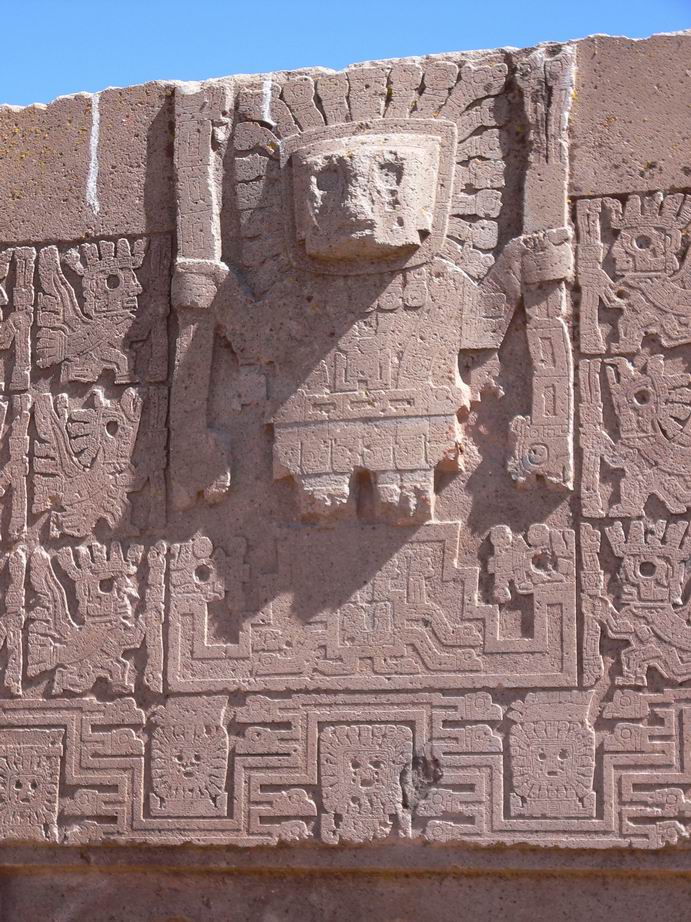 only Northern point of stability along the solar cycle, and thus a preferred way of ascension of the souls); if the winter (or, in past astronomical conditions, the opposite, summer) solstice horizon gateway to the stars is the "drawbridge" "door" of the universe "house", that only opens at solstice for every soul, then the celestial North Pole would be the "chimney", the alternative entry accessible anytime, but only to dying people, and to able trainees and shamans like "Father Christmas". Andeans could not use the "chimney", because from the Equator, on a flat world, it appears more like a tunnel to the cellar, below ground level. Therefore they were far more serious about keeping the drawbrige door functional.
only Northern point of stability along the solar cycle, and thus a preferred way of ascension of the souls); if the winter (or, in past astronomical conditions, the opposite, summer) solstice horizon gateway to the stars is the "drawbridge" "door" of the universe "house", that only opens at solstice for every soul, then the celestial North Pole would be the "chimney", the alternative entry accessible anytime, but only to dying people, and to able trainees and shamans like "Father Christmas". Andeans could not use the "chimney", because from the Equator, on a flat world, it appears more like a tunnel to the cellar, below ground level. Therefore they were far more serious about keeping the drawbrige door functional.
- As precession slowly (apparently) displaced the galactical ancestor's souls river projection, away from the winter sunrise  point in the sky, the astrotheological link to the ancestors' souls was due to be cut around 1500 CE, and the Incas feared the end of their civilization on earth. Therefore, they tried to influence the universe god, Father Time, Wiroqocha, by sympathetic magic, by lobbying
point in the sky, the astrotheological link to the ancestors' souls was due to be cut around 1500 CE, and the Incas feared the end of their civilization on earth. Therefore, they tried to influence the universe god, Father Time, Wiroqocha, by sympathetic magic, by lobbying  him, in true nomenklatura way, through earthly deeds and through patronage "guanxi", in a cosmic "War against Time": they regularly sacrificed children from all tribes, sent as emissaries to their tribe's star, so that the tribes' stars then would step up the power ladder and intercede towards the cosmic Miller himself. And as Andean mills are traditional hand mills, based on alternating motion, rocking cyclically back and forth, the Incas probably hoped that the mysterious universal cycle of precession, like the apparent solar cycle of the
him, in true nomenklatura way, through earthly deeds and through patronage "guanxi", in a cosmic "War against Time": they regularly sacrificed children from all tribes, sent as emissaries to their tribe's star, so that the tribes' stars then would step up the power ladder and intercede towards the cosmic Miller himself. And as Andean mills are traditional hand mills, based on alternating motion, rocking cyclically back and forth, the Incas probably hoped that the mysterious universal cycle of precession, like the apparent solar cycle of the  year, was also an alternating motion, and could soon come to its "solsticial" extremity and be reversed on the eleventh hour, as soon as universe ruler Wiraqocha so decided. But, while the absolute earthly solar rulers were all invested in this cosmic endeavour, the conquistadores debarqued, eerily on cue, bearded as Wiraqocha the universal overlord himself, or as his reborn deads from the overworld, to exact the dreaded astrological prediction, paralyzing the hierarchical theocratic Incas into fatalism and collapse.
year, was also an alternating motion, and could soon come to its "solsticial" extremity and be reversed on the eleventh hour, as soon as universe ruler Wiraqocha so decided. But, while the absolute earthly solar rulers were all invested in this cosmic endeavour, the conquistadores debarqued, eerily on cue, bearded as Wiraqocha the universal overlord himself, or as his reborn deads from the overworld, to exact the dreaded astrological prediction, paralyzing the hierarchical theocratic Incas into fatalism and collapse.
- Note that begging gods for mercy, instead of solving the problem in the material world, is not a faraway, primitive mode of thought. Present-day totalitarian theocratic monotheists of all stripes even long for an end-of-days "rapture" from their ecologically devastated netherworld. A CE 21st century professor of dendrochronology, studying historical natural catastrophies leading to Dark ages, concludes that a way to protect ourselves is to 'conform to the rules of the Lord of Creation and ask to be spared'.
- There was an astrotheological solution for the Incas, but it needed to be more inventive than only bargaining within the existing frame, and it was used by  the clever Christians, simultaneously as they destroyed most traces of the sophisticated inca culture, and melted the gold away. Near the ecliptic-galactic 'stargate' intersection, amongst the constellations "drowned" below the referencial winter sunrise horizon, existed a potential constellation (an asterism) in the form of a nicely perpendicular cross (just below the llama), which was adopted by the Chistians in "guerilla syncretism", after the conquest, and stilll marks a potential heavenly side of "crossing". The yearly intercession of the sun as the earthly side of the bridge, was suppressed and
the clever Christians, simultaneously as they destroyed most traces of the sophisticated inca culture, and melted the gold away. Near the ecliptic-galactic 'stargate' intersection, amongst the constellations "drowned" below the referencial winter sunrise horizon, existed a potential constellation (an asterism) in the form of a nicely perpendicular cross (just below the llama), which was adopted by the Chistians in "guerilla syncretism", after the conquest, and stilll marks a potential heavenly side of "crossing". The yearly intercession of the sun as the earthly side of the bridge, was suppressed and  bypassed, for the direct intercession of the new superior Wiroqocha on earth himself, the bearded redemptor Christian god. To boot, Andeans could still chew coca and endure. Had the Incas been capable of relinquishing some control, and gauging beforehand the Christian menace and potential, they might have themselves invented, in time, a similar new astrotheological thesis, paredolia or hierophany, compatible with a new era; perhaps a philosophy of permanent mind
bypassed, for the direct intercession of the new superior Wiroqocha on earth himself, the bearded redemptor Christian god. To boot, Andeans could still chew coca and endure. Had the Incas been capable of relinquishing some control, and gauging beforehand the Christian menace and potential, they might have themselves invented, in time, a similar new astrotheological thesis, paredolia or hierophany, compatible with a new era; perhaps a philosophy of permanent mind  liberation directly to the overworld, as was indeed done by the Eurasian syncretic religions 2 millenia before; and the Incas might have autonomously adapted e.g. into their own inca catholic state, as did even late-coming and marginal Europeans, e.g. the Lithuanians in the remote northern European forest.
liberation directly to the overworld, as was indeed done by the Eurasian syncretic religions 2 millenia before; and the Incas might have autonomously adapted e.g. into their own inca catholic state, as did even late-coming and marginal Europeans, e.g. the Lithuanians in the remote northern European forest.
Geographical or/and totalitarian isolation, after some stability, breeds fatal weakness, including in the omnipotent rulers. And history is not all written in the stars, only sometimes read in them.
Great Mushroom God of Bego (Alps) 2000 BCE
Protohistoric European dispersion
Location: French Alps, valley of Marvels, mont Bego
Size: 50 m
Story: high in a remote forested mountain valley, sculpted of 30,000 to 100,000 red schist ceremonial petroglyphs during the European (Copper-) Bronze Age, an overlooking giant face/pareidolia, identified as one of the classical triadic Indoeuropean theogony
References:
Valley of Marvels, a cradle of European religious thought, by Emilia Masson, Dossiers d'Archéologie
Vallée des Merveilles, cîmes et abîmes d'une recherche, by Emilia Masson 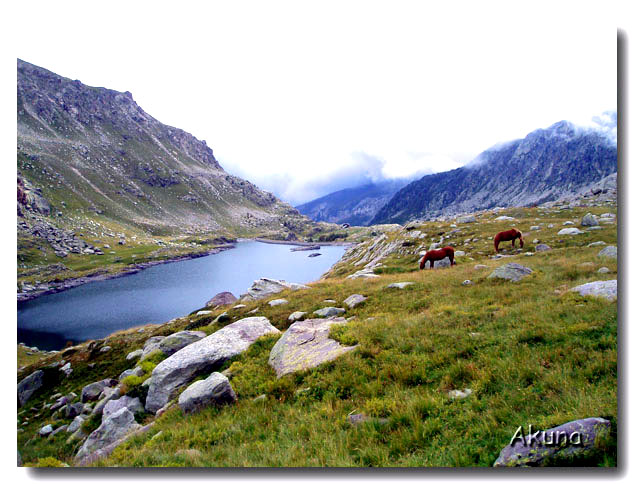
Measuring instruments for solar time at Mont Bego, by Jerome Magail
Mount Vego, Valleys of Marvels and of Fontanalba, Guides Archéologiques de France, by Henry de Lumley & al.
The grandiose and the sacred, by Henry de Lumley
The rock art of Mont Bego
Fantastic Valley of Marvels, by Edmond Rossi
Alpine Rock Art pictures
The Origin of Language: Tracing the Evolution of the Mother Tongue, by Merritt Ruhlen
Noah's Flood: The New Scientific Discoveries About The Event That Changed History, by William Ryan, Walter
http://en.wikipedia.org/wiki/Black_Sea_deluge_theory
Plants of the Gods: Their Sacred, Healing, and Hallucinogenic Powers, by Richard Evans Schultes, Albert Hofmann, Christian Rätsch
Magic Mushrooms in Religion and Alchemy, by Clark Heinrich
Mushrooms and Mankind: The Impact of Mushrooms on Human Consciousness and Religion, by James Arthur
Astrotheology and Shamanism: Unveiling the Law of Duality in Christianity and other Religions, by Jan Irvin, Andrew Rutajit
Heaven, by Diane Keaton
Movies: Mushroom, Gilgamesh
Interpretations:
- the natural large face is similar to smaller triangular petroglyphic faces, and this Hierophany-Pareidolia would have contributed to the location and attraction of the site; this is an exceptional association, not described in other petroglyph sites (e.g. the World Heritage, nearby sister site, of Valcamonica in the Italian Alps).
 - the numerous lesser petroglyphs, mainly large-horned oxheads (bucranes), ploughing, fields, impressive daggers and halberds, and also spires and numerical or lesser signs, within
- the numerous lesser petroglyphs, mainly large-horned oxheads (bucranes), ploughing, fields, impressive daggers and halberds, and also spires and numerical or lesser signs, within their cultural frame, are an early writing, a pictography, characterizing late prehistory (just before history, defined by writing). These now barely visible signs, might have been colored with pigments, at least on ritual/festive occasions.
their cultural frame, are an early writing, a pictography, characterizing late prehistory (just before history, defined by writing). These now barely visible signs, might have been colored with pigments, at least on ritual/festive occasions.
- the main character petroglyphs, from their appearance and location, conform to an Indoeuropean-like theogony, with three successive generations of gods: a first generation, creator, primordial-eternal-natural couple (Sky and Earth,  the complementary opposites, which unite to generate the world); a second generation architect-demiurge (Cronos-Saturn who mutilates his parent -with scary daggers, and looks to boot-, sets the universe in rotation, and near-retreats or is near-retired as emeritus in charge of the Big Year universal precession cycle; here, the "Sorcerer" or "Mage" -right) and a third generation CEO (Zeus-Jupiter, master of lightning -here a spear-tip-, and master of the entheogen
the complementary opposites, which unite to generate the world); a second generation architect-demiurge (Cronos-Saturn who mutilates his parent -with scary daggers, and looks to boot-, sets the universe in rotation, and near-retreats or is near-retired as emeritus in charge of the Big Year universal precession cycle; here, the "Sorcerer" or "Mage" -right) and a third generation CEO (Zeus-Jupiter, master of lightning -here a spear-tip-, and master of the entheogen 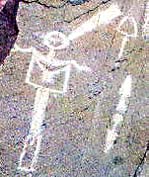 mushroom, who runs the world and the yearly solar cycle, with lesser natural gods; here, the "Chief of Tribe" -left). Sorcerer and Chief correspond to the two superior castes & qualities/temper, or "varnas" & "gunas", of the Indian traditional society and ayurveda medecine: the priest is "sattva", subtle, wise, erudite, usually serene, and white (as a druid, as Tolkien's Gandalf, and as a modern-day physician), while the warrior is more "rajas", royal, strong, courageous and generous, alert, and red, but with some "sattva" (wisdom, white spots). This interpretation correlates this remote-located, archaeological, prehistoric culture, with larger themes of a dominant, historical Indoeuropean, mythology and culture.
mushroom, who runs the world and the yearly solar cycle, with lesser natural gods; here, the "Chief of Tribe" -left). Sorcerer and Chief correspond to the two superior castes & qualities/temper, or "varnas" & "gunas", of the Indian traditional society and ayurveda medecine: the priest is "sattva", subtle, wise, erudite, usually serene, and white (as a druid, as Tolkien's Gandalf, and as a modern-day physician), while the warrior is more "rajas", royal, strong, courageous and generous, alert, and red, but with some "sattva" (wisdom, white spots). This interpretation correlates this remote-located, archaeological, prehistoric culture, with larger themes of a dominant, historical Indoeuropean, mythology and culture. 
There is no hunting nor fighting depiction, in contrast to other sites (e.g. "kali yuga" iron age warriors in Valcamonica).
- the Indo-European culture diverges, from a lost basis somewhere around the Black Sea, around the time of its Deluge (5,600 BCE), as a vast community of language and agricultural and mountainous culture, but not of ethnicity, and neither of writing mode as this archaeological site redemonstrates; resembling the modern Europeans, in contradiction of diverse racial theories.
- the entheogen mushroom theme is plausible, in light of present worldwide and internet research; the Indoeuropean third-generation, CEO-Zeus-Jupiter, divine master of lightning, appears here struck on his head by his own lighting, which might read, as in a modern comic strip, as his being struck by an idea, an intuition, an epiphany-hierophany, a koan; and this electric idea, might come from the  nearby superior, mushroom, mature and complete with its little mid-height universal veil
nearby superior, mushroom, mature and complete with its little mid-height universal veil  remnant, its narrow stem and little round cap, compatible with a psychoactive entheogen mushroom, either a cattle psilocybe (Greek ψιλος κυβη, "bare headed"), of classical blueish degradation, the source of cattle
remnant, its narrow stem and little round cap, compatible with a psychoactive entheogen mushroom, either a cattle psilocybe (Greek ψιλος κυβη, "bare headed"), of classical blueish degradation, the source of cattle  herder Krishna's blues (note that, in the shadowy pictures, the stela looks blue), or, considering the little top dots, and speculating on the possible original colors of this mushroom petroglyph (the son/sun CEO being "rajas/royal (purple)/red", but still with some remnant paternal, "sattva wisdom", white spots), an amanita muscaria.
herder Krishna's blues (note that, in the shadowy pictures, the stela looks blue), or, considering the little top dots, and speculating on the possible original colors of this mushroom petroglyph (the son/sun CEO being "rajas/royal (purple)/red", but still with some remnant paternal, "sattva wisdom", white spots), an amanita muscaria.
On the right side of the stela, next to a small adjoining praying man lifting his arms to the skies as a little Superman or a little Matrix's Neo ready to  take/lift off towards the overworld (complete with elevator's arrows for "up" and "down"), stands an interworld/Alliance/sky-ladder, which is compatible, not only with the Chief's astrotheological functions as chief (elevator) operating (CEO) god, but also as the guide in a shaman-like, hallucinogen-induced/enhanced, overworld trip.
take/lift off towards the overworld (complete with elevator's arrows for "up" and "down"), stands an interworld/Alliance/sky-ladder, which is compatible, not only with the Chief's astrotheological functions as chief (elevator) operating (CEO) god, but also as the guide in a shaman-like, hallucinogen-induced/enhanced, overworld trip.
The CEO god also positions his feet inwards, as a single mushroom stem; he wears a pectoral  oxhead symbol collar, like the ram golden fleece order of the later European noble and monarchical confraternity. A ram refers to the zodiacal Age of Aries (from around 2,000 BCE to 1 CE, when the sun at spring equinox rose on that constellation), of classical Greece, as a bull refers to the previous zodiacal Age of Taurus (from around 4,000 BCE to 2,000 BCE), of Bego's beginnings.
oxhead symbol collar, like the ram golden fleece order of the later European noble and monarchical confraternity. A ram refers to the zodiacal Age of Aries (from around 2,000 BCE to 1 CE, when the sun at spring equinox rose on that constellation), of classical Greece, as a bull refers to the previous zodiacal Age of Taurus (from around 4,000 BCE to 2,000 BCE), of Bego's beginnings.
Indoeuropean mythological hero Jason, Quests the Golden Fleece, in a mystical memory trip back to the overseas lost forested land of the ancestors around the Black Sea, plausibly in search of the original entheogen, the pinetree-associated amanita, which dries (converting ibotenic acid into more effective muscimol) golden, hanging like a fleece (or a crucified god). Quite like eastern Gilgamesh on his western quest of mystical immortality, passes by a garden tree covered with precious stones and bearing beautiful fruit (like a “Christmas” tree with amanita “apples”), crosses (here with a stone/fruit/mushroom in hand) the «Water of Death» ocean (the 
 then instructs him to pluck a magical rejuvenation plant by diving underwater (to the sunken forests of the former seashore), plant which is then quickly stolen by a serpent (possibly flea larvae from the stem of a mushroom, as Gilgamesh didn't know how to preserve it) (other interpretations, not necessarily incompatible as myths are reused and enriched over time, include an overworld voyage/ Polaris exit, a transoceanic American voyage to the "circular" other-side-of-the-Earth underworld). Says Gilgamesh meeting Utnapushtim, "he who found life": "When I regard you now, my god-like man, it's like seeing my own face on calm water where I dare to study myself."
then instructs him to pluck a magical rejuvenation plant by diving underwater (to the sunken forests of the former seashore), plant which is then quickly stolen by a serpent (possibly flea larvae from the stem of a mushroom, as Gilgamesh didn't know how to preserve it) (other interpretations, not necessarily incompatible as myths are reused and enriched over time, include an overworld voyage/ Polaris exit, a transoceanic American voyage to the "circular" other-side-of-the-Earth underworld). Says Gilgamesh meeting Utnapushtim, "he who found life": "When I regard you now, my god-like man, it's like seeing my own face on calm water where I dare to study myself."
The giant face of the mount Bego universal god itself, elongated with a narrow long nose, pareidolia-hierophanically, looks like the same round capped, bare-headed  mushroom, with the long nose being a stem, and the rounded front above the narrow eyes being a cap; the overall face appears as a vertical asymmetrical oval, like the maturing mushroom, distending its veil, and on the verge of breaking it, in a possible image of imminent entheogen-enhanced spiritual emergence from the material egg-universe. This would make the Bego face, the Chief god of the Copper-Bronze Age sheperds, amongst the most ancient, and the largest naturally-occuring entheogenic mushroom pareidolia-theophany illustration on Earth, the Great Mushroom God.
mushroom, with the long nose being a stem, and the rounded front above the narrow eyes being a cap; the overall face appears as a vertical asymmetrical oval, like the maturing mushroom, distending its veil, and on the verge of breaking it, in a possible image of imminent entheogen-enhanced spiritual emergence from the material egg-universe. This would make the Bego face, the Chief god of the Copper-Bronze Age sheperds, amongst the most ancient, and the largest naturally-occuring entheogenic mushroom pareidolia-theophany illustration on Earth, the Great Mushroom God.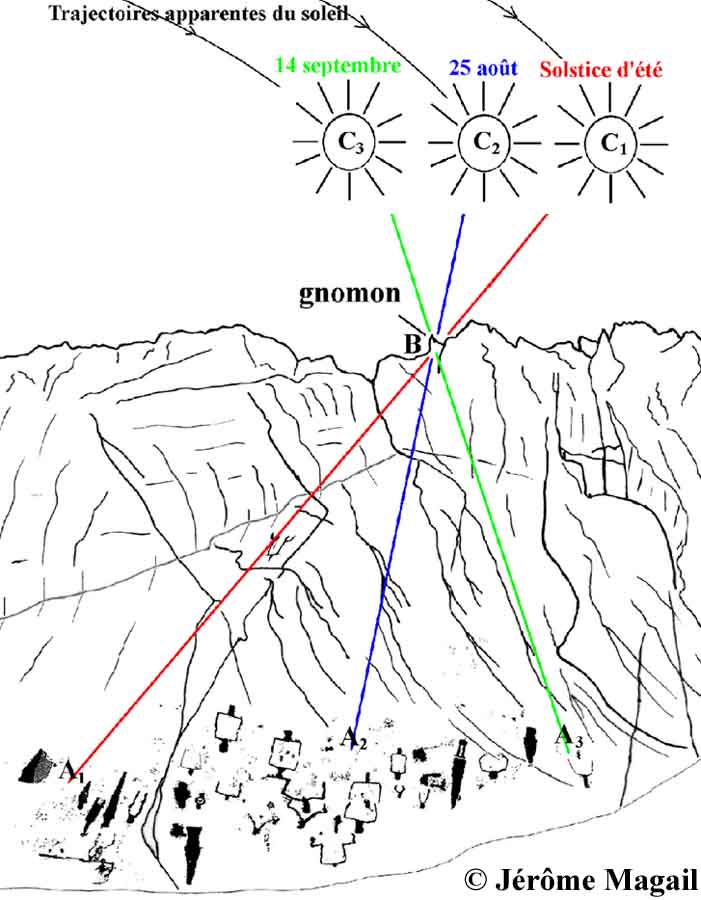
- elements of the site point to an astronomical role,  with sundial observations of the solar cycle,
with sundial observations of the solar cycle, from an altar bearing a petroglyph of a standing "hula hoop" figure, winged or encircled, similar to a ceremonial dervish-like dancer, an angel, an Atlas, a mushroom, or/and an axis mundi in a cosmic zodiacal orbs/orbit, ready to fly up/burst out/ascend through the polar "chimney" hole.
from an altar bearing a petroglyph of a standing "hula hoop" figure, winged or encircled, similar to a ceremonial dervish-like dancer, an angel, an Atlas, a mushroom, or/and an axis mundi in a cosmic zodiacal orbs/orbit, ready to fly up/burst out/ascend through the polar "chimney" hole. Another petroglyph shows a rectangle
Another petroglyph shows a rectangle  cut in four by a cross, encircled by a sinusoid or 3D helicoid terminated at its top by a little oval: the line might represent a cyclical phenomenon deploying in another dimension of space or time, the rectangle might represent the earth or universe (as on numerous more exoteric petroglyphs, fields are represented as rectangles criss-crossed into a grid; Chinese represented earth as a rectangle "t'sung" and
cut in four by a cross, encircled by a sinusoid or 3D helicoid terminated at its top by a little oval: the line might represent a cyclical phenomenon deploying in another dimension of space or time, the rectangle might represent the earth or universe (as on numerous more exoteric petroglyphs, fields are represented as rectangles criss-crossed into a grid; Chinese represented earth as a rectangle "t'sung" and  sky by a "pi" circle, as in their coins), maybe as a house, with four cardinal directions and angle posts of solstices and equinoxes, encircled by a powerful overworld sky serpent/ universe dragon. The sun's move around the earth is an helix, reversing at the solstice/serpent's head. Draco, the dragon, is a serpenting Northern constellation wrapped around the Earth celestial pole, so long that it
sky by a "pi" circle, as in their coins), maybe as a house, with four cardinal directions and angle posts of solstices and equinoxes, encircled by a powerful overworld sky serpent/ universe dragon. The sun's move around the earth is an helix, reversing at the solstice/serpent's head. Draco, the dragon, is a serpenting Northern constellation wrapped around the Earth celestial pole, so long that it 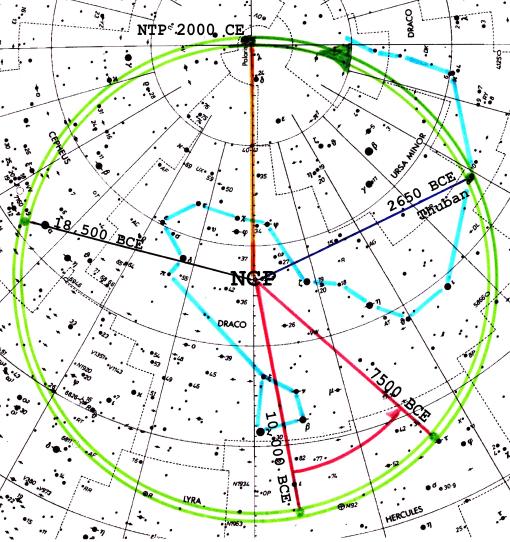 always circles in the vicinity of that pole even while the pole slowly changes in a circle during the 26,000 years cycle of precession, as a true guardian of the stable 'stargate' exit point of the universe (and near the Hesperides princesses of the golden apples); moreover, in 2,600 BCE, around the time when the Bego astronomers were taking notes on stone, it was the brightest star of Draco constellation itself, alpha draconis (now known by its islamic name Thuban), that marked the celestial north pole, as the head and the eye of the serpent of heaven(s), the hierophany-pareidolia of the exit of macrocosmos, as well as inner microcosm plausibly. The sun cycle representation is most probable, while representation of precession is more hypothetical. These modest petroglyphs, representing earth and heaven, are yet another sign of sophisticated astrotheological knowledge of this prehistoric ideographic culture.
always circles in the vicinity of that pole even while the pole slowly changes in a circle during the 26,000 years cycle of precession, as a true guardian of the stable 'stargate' exit point of the universe (and near the Hesperides princesses of the golden apples); moreover, in 2,600 BCE, around the time when the Bego astronomers were taking notes on stone, it was the brightest star of Draco constellation itself, alpha draconis (now known by its islamic name Thuban), that marked the celestial north pole, as the head and the eye of the serpent of heaven(s), the hierophany-pareidolia of the exit of macrocosmos, as well as inner microcosm plausibly. The sun cycle representation is most probable, while representation of precession is more hypothetical. These modest petroglyphs, representing earth and heaven, are yet another sign of sophisticated astrotheological knowledge of this prehistoric ideographic culture.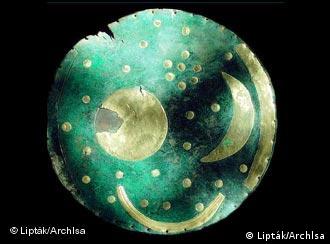
Another advanced Bronze Age astronomical device is the 1,600 sky disc of Nebra BCE (Germany).
Daggers, and dagger signs, served as powerful measuring tools, portable manifestations of material, spiritual and astrological power, either as gnomons by their length and shadows, or by their direction. Mystical insight seems to have been be closely associated with scientific discovery, spiritual power with intellectual and material power. Unity with nature conforts an anthropic principle, well before the modern filiation from monotheism to science.
powerful measuring tools, portable manifestations of material, spiritual and astrological power, either as gnomons by their length and shadows, or by their direction. Mystical insight seems to have been be closely associated with scientific discovery, spiritual power with intellectual and material power. Unity with nature conforts an anthropic principle, well before the modern filiation from monotheism to science.
Interpreting the universe with myth was trying to encircle the rectangle, as interpreting mysticism through science might be trying to square the circle.
Sphinx of Gizeh (Egypt) 10,500?-2,500 BCE
Riddle of Antiquity
 Location: Egypt, Gizeh near Cairo
Location: Egypt, Gizeh near Cairo
Size: 20 m height
Story: a reclining hybrid of lion body and human head, carved out of the limestone bedrock in remote times, and now in the African desert, near three large Pyramids, the largest one of the Seven Wonders of the ancient world
References: Ancient Egypt books
The Message of the Sphinx: A Quest for the Hidden Legacy of Mankind by Graham Hancock, Robert Bauval
Sahara was once lush and populated: Between periods of dryness were millennia of rainfall and lush vegetation
Paleolithic Psychoactive Mushrooms Shamanism in Sahara
Exodus From Drying Sahara Gave Rise to Pharaohs
Underworld: The Mysterious Origins of Civilization, by Graham Hancock
Movie
Interpretations: - the Sphinx, legendary master of riddles, is also named Hor-em-Akhet, 'Horus in the Horizon', from Heru, 'face': a face in the horizon, either visible from afar, or far-seeing; astronomical orientations are reportedly identified in
- the Sphinx, legendary master of riddles, is also named Hor-em-Akhet, 'Horus in the Horizon', from Heru, 'face': a face in the horizon, either visible from afar, or far-seeing; astronomical orientations are reportedly identified in  Ancient Egypt, notably of the pharaonic Great Pyramid's inner shafts (around 2,400 BCE) towards the stars of Orion constellation’s belt, the region of the night sky that was the realm
Ancient Egypt, notably of the pharaonic Great Pyramid's inner shafts (around 2,400 BCE) towards the stars of Orion constellation’s belt, the region of the night sky that was the realm 
- the head of the Sphinx is relatively too small for the  body, but more detailed and less degraded by time, it might have been re-sculpted after suffering extensive erosion damage, as observed on the body; probable weathering by water (a weathering by wind and sand is alternatively hypothesized, although durable natural burying was probably a protection) implies a wetter climate, which did exist long ago in the Sahara, after the glacial age and before desertification, with savannahs, forests, and swamps, but implies a greater antiquity of the sphinx than usually recognized.
body, but more detailed and less degraded by time, it might have been re-sculpted after suffering extensive erosion damage, as observed on the body; probable weathering by water (a weathering by wind and sand is alternatively hypothesized, although durable natural burying was probably a protection) implies a wetter climate, which did exist long ago in the Sahara, after the glacial age and before desertification, with savannahs, forests, and swamps, but implies a greater antiquity of the sphinx than usually recognized.
- a grand hypothesis, was that the body before erosion 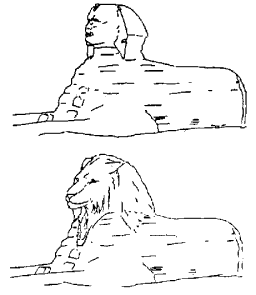 was a full Lion, with a well-proportioned head, back in a lush climate past, corresponding, and to the zodiacal Age of Lion, and to a spring equinox sunrise on the constellation of Leo, pointing back through precession to a period around 11,000 BCE, after the end of the ice Age, when the sea level was far lower, meaning a very different climate
was a full Lion, with a well-proportioned head, back in a lush climate past, corresponding, and to the zodiacal Age of Lion, and to a spring equinox sunrise on the constellation of Leo, pointing back through precession to a period around 11,000 BCE, after the end of the ice Age, when the sea level was far lower, meaning a very different climate  and fauna (perhaps including lions), and coastal cultural remains now forgotten underwater).
and fauna (perhaps including lions), and coastal cultural remains now forgotten underwater). Evaluation: astronomical lines seem incorrect, which might invalidate theory or datation.
Evaluation: astronomical lines seem incorrect, which might invalidate theory or datation.
Moai of Yonaguni (Japan-Taiwan) 11,000-8,000 BCE ?
Submarine Megaliths
Location: Oceania, extreme South of the Japanese archipelago, North of Taiwan
Size: 15 meter, 18 meter deep
Story: a giant underwater face on the submarine rift joining Japan to Taiwan, near an underwater platforms and stepped pyramid-like complex
References:
Japan's Underwater Ruins
Japan's Mysterious Pyramids: History's Mysteries
Morien Institute
http://www.morien-institute.org/yonaguni.html
Ancient Archeology, Leyden
Underworld: The Mysterious Origins of Civilization, by Graham Hancock
http://www.grahamhancock.com/underworld
http://www.grahamhancock.com/gallery/underwater/yonaguni.htm
http://www.grahamhancock.com/gallery/underwater/default.htm
Eden in the East: The Drowned Continent of Southeast Asia, by Stephen Oppenheimer
Underwater Finds Raise Questions About Flood Myths, National Geographic
Ooparts, Underwater Monuments
Discovery of Atlantis: the Startling Case for the Island of Cyprus, by Robert Sarmast
Submarine Prehistoric Archaeology Of The North Sea, by Nic Flemming
Jomon of Japan: The World's Oldest Pottery, by Douglas Moore Kenrick
Ancient Jomon of Japan, by Junko Habu, Rita Wright
Pseudoarcheology
Movie, movies, underwater Egypt, Mediterranean 3D model; Bimini & Andros
Interpretations: 
 - the face stands 2500 m east from the megalithic "monument"; it might be natural or enhanced, but the combination with the nearby terraces makes a purely natural feature improbable.
- the face stands 2500 m east from the megalithic "monument"; it might be natural or enhanced, but the combination with the nearby terraces makes a purely natural feature improbable.
In local Okinawan dialect, rectilinear ancestral burial vaults are reportedly named moai, the same word Polynesians of Easter Island, more than 6,000 miles away, used to describe their large-headed ancestral statues. - natural geological features (quartzites) that have probably been modified; biggest of 5 rock-hewn megalithic monuments is 100 m long, 30 m wide, 5 to 27 m underwater; probable ceremonial and astronomical "ziggurat" function, on the then Tropic of Cancer; the 'Yonaguni Monument' is just one of a number of underwater megalithic structures in a 'complex', including reported pyramids (up to 5 levels, 180 m wide, 25 m high, West of the island), stretching for many hundreds of miles north of Taiwan, on what used to be the summet mountain ridge
- natural geological features (quartzites) that have probably been modified; biggest of 5 rock-hewn megalithic monuments is 100 m long, 30 m wide, 5 to 27 m underwater; probable ceremonial and astronomical "ziggurat" function, on the then Tropic of Cancer; the 'Yonaguni Monument' is just one of a number of underwater megalithic structures in a 'complex', including reported pyramids (up to 5 levels, 180 m wide, 25 m high, West of the island), stretching for many hundreds of miles north of Taiwan, on what used to be the summet mountain ridge
- the monuments were carved in cyclopean scale while still above sea level
- Worldwide, several underwater ruins have been suspected or detected, of different depths,  hypothetical ages, and potential civilizations: off Taiwan (Penghu), Micronesia (Ponape), India (Cambay, 7,000 BCE, 36 m), Cuba-
hypothetical ages, and potential civilizations: off Taiwan (Penghu), Micronesia (Ponape), India (Cambay, 7,000 BCE, 36 m), Cuba- Yucatan (? 6,000 BCE, ? 700 m implying an unknown mechanism, maybe volcanic) and Caribbeans (Bimini harbour ?, ? 3,000 BCE, Andros ?) and Bermuda (? 130 m), Europe (Azores-Canarys ?, Lyonesse ?, Ys ?, Black Sea 150 m) and Mediterranean (Cyprus ? 1600 m, Thera, Tartessos ?, Spartel ? , Helike, Herakleion), prehistoric artefacts under the European North Sea, submerged forests, ...
Yucatan (? 6,000 BCE, ? 700 m implying an unknown mechanism, maybe volcanic) and Caribbeans (Bimini harbour ?, ? 3,000 BCE, Andros ?) and Bermuda (? 130 m), Europe (Azores-Canarys ?, Lyonesse ?, Ys ?, Black Sea 150 m) and Mediterranean (Cyprus ? 1600 m, Thera, Tartessos ?, Spartel ? , Helike, Herakleion), prehistoric artefacts under the European North Sea, submerged forests, ...
 Some spectacular theories locate whole cities at km-range depths (most notably, the Cuban and the Cyprus Atlantis, at 700 and 1600 m), implicating a different mechanism from the known ocean level rise after the ice age (as such depths were probably never above waters in human times), like a catastrophic landslide or a sea reconnection (which happened
Some spectacular theories locate whole cities at km-range depths (most notably, the Cuban and the Cyprus Atlantis, at 700 and 1600 m), implicating a different mechanism from the known ocean level rise after the ice age (as such depths were probably never above waters in human times), like a catastrophic landslide or a sea reconnection (which happened  million years ago in the Mediterranean, invalidating the Cyprus hypothesis), or even comet impact, improbabilities which necessitate a higher burden of proof. Moreover, whenever these places were above water, so were many others, maybe even more spectacular.
million years ago in the Mediterranean, invalidating the Cyprus hypothesis), or even comet impact, improbabilities which necessitate a higher burden of proof. Moreover, whenever these places were above water, so were many others, maybe even more spectacular.
- Several large-scale maritime Flood disasters are known to occur in human times: localized terrain slide and mud liquefaction (Helike, Herakleion), sea reconnection (Black Sea deluge), (mega-)tsunami (Canaries), volcano explosion (Thera-Santorin as Mediterranean Atlantis, Krakatoa & CE 535 proto-Krakatoa), and even comet/meteor impact, but the worldwide mechanism  of submersion is rising ocean levels. These cities were on the ridge of now underwater mountains; oceans rose about 130 meters after the last glaciation from 12,000 BCE, sometimes rather rapidly (through release of glacial lakes, and compensatory oscillations of the Earth crust causing megatsunamis), in prehistorical Floods. This alone puts datation of these ruins in the 1,000s of years BCE, a megalithic Atlantis/Mu
of submersion is rising ocean levels. These cities were on the ridge of now underwater mountains; oceans rose about 130 meters after the last glaciation from 12,000 BCE, sometimes rather rapidly (through release of glacial lakes, and compensatory oscillations of the Earth crust causing megatsunamis), in prehistorical Floods. This alone puts datation of these ruins in the 1,000s of years BCE, a megalithic Atlantis/Mu - Probably many more underwater archeological "missing links" remain, but less impressive and/or deeper buried under silt. Most beginnings of human culture are now underwater. The whole South-East Asian region was once above water, including the Sundaland "Eden in The East", and at the origin of the Austronesian diaspora.
- Probably many more underwater archeological "missing links" remain, but less impressive and/or deeper buried under silt. Most beginnings of human culture are now underwater. The whole South-East Asian region was once above water, including the Sundaland "Eden in The East", and at the origin of the Austronesian diaspora.
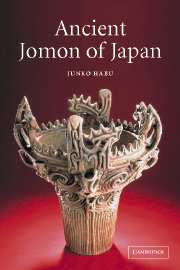 - corresponding very old cultural
- corresponding very old cultural  remains are Japan's long-lasting (to 400 BCE) Jomon culture (reportedly similar to remains in the Valdivia culture of Ecuador, at the end of the transpacific "black current" (kuroshio), but without any convincing illustration found on the web), which cultivated rice very early
remains are Japan's long-lasting (to 400 BCE) Jomon culture (reportedly similar to remains in the Valdivia culture of Ecuador, at the end of the transpacific "black current" (kuroshio), but without any convincing illustration found on the web), which cultivated rice very early
- Speculations about past civilizations and globalized water-borne trading and religious relationships. Several worldwide or regional megalithic cultures.
- The same kind of submersion threatens all present coastal
regions in the coming centuries, due to runaway global warming and melting of Earth's ice sheets.
Evaluation: several uncertain data, and insufficiently substantiated hypotheses, pending extensive underwater sudies and their public release, but the post-ice age sea level changes are real, and so are some at least of the underwater features; this is a grand return of catastrophism and diffusionism (corresponding to the socionomical mood of our period of questioned globalization and environmental crises).
Watcher of Cydonia Mensae (planet Mars) ? BCE
Outer Limits Location: planet Mars, Cydonia Mensae region
Location: planet Mars, Cydonia Mensae region
Size: 1800 m
Story: photographed in 1976 by the Viking Orbiter, a face-looking hill, adjoined by buildings-lookings mounds, nearby a possible shoreline; from several faraway images and treatments, might be untrustworthy
References:
http://en.wikipedia.org/wiki/Face_on_Mars
http://skepdic.com/faceonmars.html
http://www.csicop.org/si/8512/face-on-mars.html
http://science.nasa.gov/headlines/y2001/ast24may_1.htm
http://www.newfrontiersinscience.com/cydoniacontroversy
http://www.enterprisemission.com/index.php
The Cydonia Controversy: The History, Science, and Implications of the Discovery of Artificial Structures on Mars, by Mark Carlotto
The Cydonia Codex: Reflections from Mars, by George Haas, William Saunders, William Saunders
The Case for the Face: Scientists Examine the Evidence for Alien Artifacts on Mars, by Stanley McDaniel, Society for Planetary Seti Research, Monica Rix Paxson
Artificial Structures on Mars, by Van Flandern
The Monuments of Mars: A City on the Edge of Forever, by Richard Hoagland
How Might Life Evolve on Other Worlds?: Seti Academy Planet Project (Life in the Universe), by Seti Institute, Carl Sagan
Mars, Panspermia, and the Origin of Life, The Martian Magnetofossils, by Joseph Kirschvink
Terraformation & news
The Snows of Olympus: A Garden on Mars, by Arthur C. Clarke
The Case for Mars, by Robert Zubrin
A Traveler's Guide to Mars; by William Hartmann
In flying saucers: towards an ethnology of abduction narratives, by Bertrand Meheust
DMT: The Spirit Molecule: A Doctor's Revolutionary Research into the Biology of Near-Death and Mystical Experiences, by Rick Strassman
UFOs and the National Security State: Chronology of a Coverup, 1941-1973, by Richard Dolan, Jacques Vallee
http://www.space.com/businesstechnology/flying_triangle_040902.html Movie (gif animation)
Movie (gif animation)
Interpretations:
"We simply don't know. "
Initial renderings were highly suggestive of a human face, and prompted elaborate hypotheses:
 - life had been possible on Mars, with water and atmosphere
- life had been possible on Mars, with water and atmosphere
- life there looked much like ours, with 
- humanoïds had lived on Mars, and built this structure, towards the skies with metaphysical purpose
- the monument was part of a complex city, on a  seashore
seashore
- very long-term erosion blurred this landscape's features
- either they were humans and contact existed with Earth, or they were humanoïd aliens, and they died out long ago, possibly through some ecological catastrophy
Arthur C. Clarke, meeting with astronaut Buzz Aldrin: “I'm fairly
convinced that we have discovered life on Mars. There are some incredible
photographs from [the Jet Propulsion Laboratory], which to me are pretty
convincing proof of the existence of large forms of life on Mars! Have a
look at them. I don't see any other interpretation."
 Evaluation: the controversy has many hallmarks of "cause celebre" atypical science, high paradigmatic stakes, little proof, controversy on data, a transitional period of distrust in public institutions, colorful insufficiently
Evaluation: the controversy has many hallmarks of "cause celebre" atypical science, high paradigmatic stakes, little proof, controversy on data, a transitional period of distrust in public institutions, colorful insufficiently  scientifical investigators, ... . Remember though, e.g., that the archaeological site of Troy (Hissarlik, another hill) was discovered by an outsider (who ruined the site and lost the best artifacts).
scientifical investigators, ... . Remember though, e.g., that the archaeological site of Troy (Hissarlik, another hill) was discovered by an outsider (who ruined the site and lost the best artifacts).The only proof, the photographs, were repeated in 2001 and reworked, and became officially less convincing. The responsible U.S. governmental agency (NASA) did or did not soften the images.
a man
a coastal monument, remember Mars' canals, and the athmospheric machines of Burrough's Barsoom ...

a gold rationale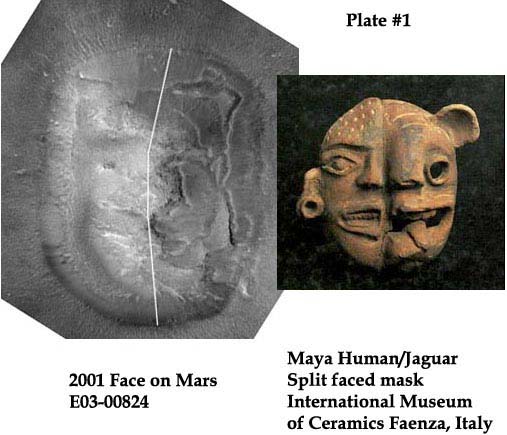 a split-faced, half human(oïd), half jaguar
a split-faced, half human(oïd), half jaguar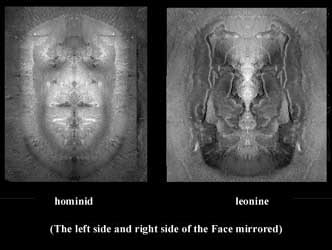
a split-faced man-lion
an alien
a sphinx

a light-reflecting beacon
a bearded & mustachioed warrior
the shroud of Mars ?
a woman (Mission to Mars movie)

a hill








